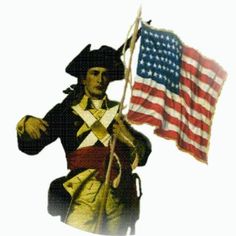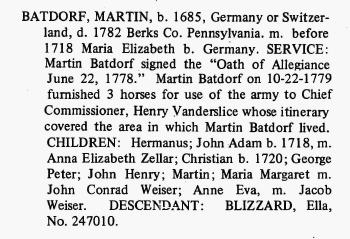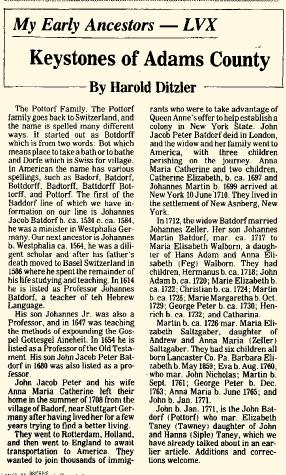James Riley Quinn
M, b. 15 March 1843, d. 20 February 1926
| Father* | Martin Quinn |
| Mother* | Bridget Riley d. c 1852 |
Children of James Riley Quinn and Louisa Dunfee
- Mattie Mulvina Quinn b. 8 Jul 1867
- William Thomas Quinn b. 16 Jan 1870
- Joseph Riley Quinn b. 15 Aug 1872
Children of James Riley Quinn and Mary Elizabeth Weyand
- Nora E. Quinn+ b. 24 Aug 1878
- Arthur Allen Quinn b. 5 Aug 1880
- Jennie Mable Quinn+ b. 15 Apr 1884, d. 15 Feb 1964
- Enoch Beckley Quinn b. 15 Dec 1887, d. Feb 1969
- Martin Harrison Quinn b. 18 Aug 1889, d. May 1968
- Albert Quinn b. 14 Aug 1891, d. 11 Nov 1891
- Samuel W. Quinn b. 14 Aug 1891, d. 9 Nov 1891
- Orville Grant Quinn b. 14 Jan 1894, d. Oct 1966
- Orveta Pauline Quinn+ b. 5 Mar 1898, d. Nov 1986
Orveta Pauline Quinn
F, b. 5 March 1898, d. November 1986
| Father* | James Riley Quinn b. 15 Mar 1843, d. 20 Feb 1926 |
| Mother* | Mary Elizabeth Weyand b. 15 Mar 1858, d. 24 Jun 1933 |
Children of Orveta Pauline Quinn and Clifford Ross Wright
- Dean E. Wright b. 1 Feb 1919
- Lois Lee Wright b. 17 Feb 1921
Clifford Ross Wright
M
Children of Clifford Ross Wright and Orveta Pauline Quinn
- Dean E. Wright b. 1 Feb 1919
- Lois Lee Wright b. 17 Feb 1921
Dean E. Wright
M, b. 1 February 1919
| Father* | Clifford Ross Wright |
| Mother* | Orveta Pauline Quinn b. 5 Mar 1898, d. Nov 1986 |
Ameila Zoeller
F
Child of Ameila Zoeller and Frederick Weiser
- John Conrad Weiser+ b. 15 Apr 1753, d. 10 Sep 1804
John Conrad Weiser
M, b. 15 April 1753, d. 10 September 1804
| Father* | Frederick Weiser b. 24 Dec 1728, d. 1790 |
| Mother* | Ameila Zoeller |
Child of John Conrad Weiser and Elizabeth Marrien Klinger
- Eva Weiser+ b. 1782, d. a 1846
Elizabeth Marrien Klinger
F, b. 10 May 1756, d. 12 March 1820
Child of Elizabeth Marrien Klinger and John Conrad Weiser
- Eva Weiser+ b. 1782, d. a 1846
Eva Weiser
F, b. 1782, d. after 1846
| Father* | John Conrad Weiser b. 15 Apr 1753, d. 10 Sep 1804 |
| Mother* | Elizabeth Marrien Klinger b. 10 May 1756, d. 12 Mar 1820 |
Children of Eva Weiser and George Hepner
- John Hepner+
- Margaret E. Hepner+ b. 1818, d. 1859
George Hepner
M
Children of George Hepner and Eva Weiser
- John Hepner+
- Margaret E. Hepner+ b. 1818, d. 1859
Margaret E. Hepner
F, b. 1818, d. 1859
| Father* | George Hepner |
| Mother* | Eva Weiser b. 1782, d. a 1846 |
Child of Margaret E. Hepner and Samuel Brosius
- Elizabeth Brosius+ b. 1843, d. 1915
Elizabeth Brosius
F, b. 1843, d. 1915
| Father* | Samuel Brosius |
| Mother* | Margaret E. Hepner b. 1818, d. 1859 |
Child of Elizabeth Brosius and Jacob Harter Eister
- John S.A. Eister+ b. 1876, d. 1947
Jacob Harter Eister
M
Child of Jacob Harter Eister and Elizabeth Brosius
- John S.A. Eister+ b. 1876, d. 1947
John S.A. Eister
M, b. 1876, d. 1947
| Father* | Jacob Harter Eister |
| Mother* | Elizabeth Brosius b. 1843, d. 1915 |
Child of John S.A. Eister and Roselda Krigbaum
- Dorothy Mae Eister+ b. 1908, d. 1977
Roselda Krigbaum
F
Child of Roselda Krigbaum and John S.A. Eister
- Dorothy Mae Eister+ b. 1908, d. 1977
Dorothy Mae Eister
F, b. 1908, d. 1977
| Father* | John S.A. Eister b. 1876, d. 1947 |
| Mother* | Roselda Krigbaum |
William Raymond Sulouff
M
Jacob Weiser
M, b. 22 September 1736, d. 1 January 1808
| Father* | Christopher Frederick Weiser b. 24 Feb 1699, d. 6 Jun 1768 |
| Mother* | Elizabeth Breidenbach b. 25 Dec 1702, d. 29 Jul 1760 |
Children of Jacob Weiser and Anna Elizabeth Kurr
- Mary Weiser
- Elizabeth Weiser+ b. 23 Dec 1763, d. 10 Jun 1837
- John Weiser+ b. 23 Jan 1766, d. 7 Nov 1825
- Jacob Weiser b. 5 Sep 1774, d. 30 Jun 1793
Anna Elizabeth Kurr
F, b. 5 June 1740, d. 1 October 1805
Children of Anna Elizabeth Kurr and Jacob Weiser
- Mary Weiser
- Elizabeth Weiser+ b. 23 Dec 1763, d. 10 Jun 1837
- John Weiser+ b. 23 Jan 1766, d. 7 Nov 1825
- Jacob Weiser b. 5 Sep 1774, d. 30 Jun 1793
John Weiser
M, b. 23 January 1766, d. 7 November 1825
| Father* | Jacob Weiser b. 22 Sep 1736, d. 1 Jan 1808 |
| Mother* | Anna Elizabeth Kurr b. 5 Jun 1740, d. 1 Oct 1805 |
Child of John Weiser
- Peter Weiser+ b. 25 May 1789, d. 18 May 1843
Elizabeth Anspach
F, b. 2 November 1776, d. 14 March 1841
Peter Weiser
M, b. 25 May 1789, d. 18 May 1843
| Father* | John Weiser b. 23 Jan 1766, d. 7 Nov 1825 |
Child of Peter Weiser and Sarah Moore
- Jacob Weiser b. 3 Mar 1823, d. 10 Oct 1887
Jacob Weiser
M, b. 3 March 1823, d. 10 October 1887
| Father* | Peter Weiser b. 25 May 1789, d. 18 May 1843 |
| Mother* | Sarah Moore |
Ellen Frances Rider
F
| Father* | George Rider b. 1787, d. 1865 |
| Mother* | Martha Weiser b. 1802, d. 1885 |
Child of Ellen Frances Rider
Johannes Martin Batdorf
M, b. September 1698, d. 20 February 1782
| Father* | Johannes Jacob Peter Batdorf b. 1648, d. 1709 |
| Mother* | Anna Maria Catharina Herber b. 9 May 1677, d. 14 Jan 1748 |
Children of Johannes Martin Batdorf and Margaretha Elisabetha Walborn
- Hermanus Batdorf b. 1719, d. 1763
- Margaretha Elizabetha Batdorf b. Jun 1719
- Anna Eva Batdorf b. 1722
- Christian Batdorf b. 1724, d. 16 May 1781
- Johan Adam Batdorf b. 1724, d. 10 Oct 1757
- George Peter Batdorf b. 1725, d. 1792
- Maria Margaret Batdorf+ b. 10 Oct 1729, d. 22 Dec 1772
- Henry Batdorf b. 1732, d. 15 Aug 1808
- Martin Batdorf b. 1734
- Eva Maria Batdorf b. c 1735, d. 15 May 1805
- Maria Elizabeth Batdorf b. 12 Feb 1737
- Catharina Maria Anna Batdorf+ b. 29 Mar 1746, d. 14 Apr 1837
Margaretha Elisabetha Walborn
F, b. 25 October 1696, d. 1796
| Father* | Johann Adam Walborn b. 1666, d. 1741 |
| Mother* | Anna Elizabetha Feg b. 1670 |
Children of Margaretha Elisabetha Walborn and Johannes Martin Batdorf
- Hermanus Batdorf b. 1719, d. 1763
- Margaretha Elizabetha Batdorf b. Jun 1719
- Anna Eva Batdorf b. 1722
- Christian Batdorf b. 1724, d. 16 May 1781
- Johan Adam Batdorf b. 1724, d. 10 Oct 1757
- George Peter Batdorf b. 1725, d. 1792
- Maria Margaret Batdorf+ b. 10 Oct 1729, d. 22 Dec 1772
- Henry Batdorf b. 1732, d. 15 Aug 1808
- Martin Batdorf b. 1734
- Eva Maria Batdorf b. c 1735, d. 15 May 1805
- Maria Elizabeth Batdorf b. 12 Feb 1737
- Catharina Maria Anna Batdorf+ b. 29 Mar 1746, d. 14 Apr 1837
Catherina Elizabeth Reith
F
Johannes Jacob Peter Batdorf
M, b. 1648, d. 1709
| Father* | Johannes Batdorf Jr. b. 1600, d. 1664 |
Children of Johannes Jacob Peter Batdorf and Anna Maria Catharina Herber
- Catherine Elizabeth Batdorf+ b. 1697, d. Mar 1764
- Johannes Martin Batdorf+ b. Sep 1698, d. 20 Feb 1782
Anna Maria Catharina Herber
F, b. 9 May 1677, d. 14 January 1748
| Father* | Johannes Heinrich Herber b. 8 Jan 1659, d. c 1700 |
| Mother* | Anna Maria Seemann b. 23 May 1659, d. 1698 |
Children of Anna Maria Catharina Herber and Johannes Jacob Peter Batdorf
- Catherine Elizabeth Batdorf+ b. 1697, d. Mar 1764
- Johannes Martin Batdorf+ b. Sep 1698, d. 20 Feb 1782



